Given the competitive nature of the restaurant industry and the market changes leading to rising costs, keeping your restaurant profitable can be challenging.
However, this challenge can be overcome with the help of efficient restaurant revenue management.
This article is going to dive into some of the most important questions regarding this concept—from why it’s so important for your restaurant, to what steps you can take in order to make it more effective.
So, let’s dive right in.
What Is Restaurant Revenue Management
In order to be able to discuss the intricacies of restaurant revenue management, we first need to explain what this concept actually entails.
So, let’s start by taking a look at the definition:
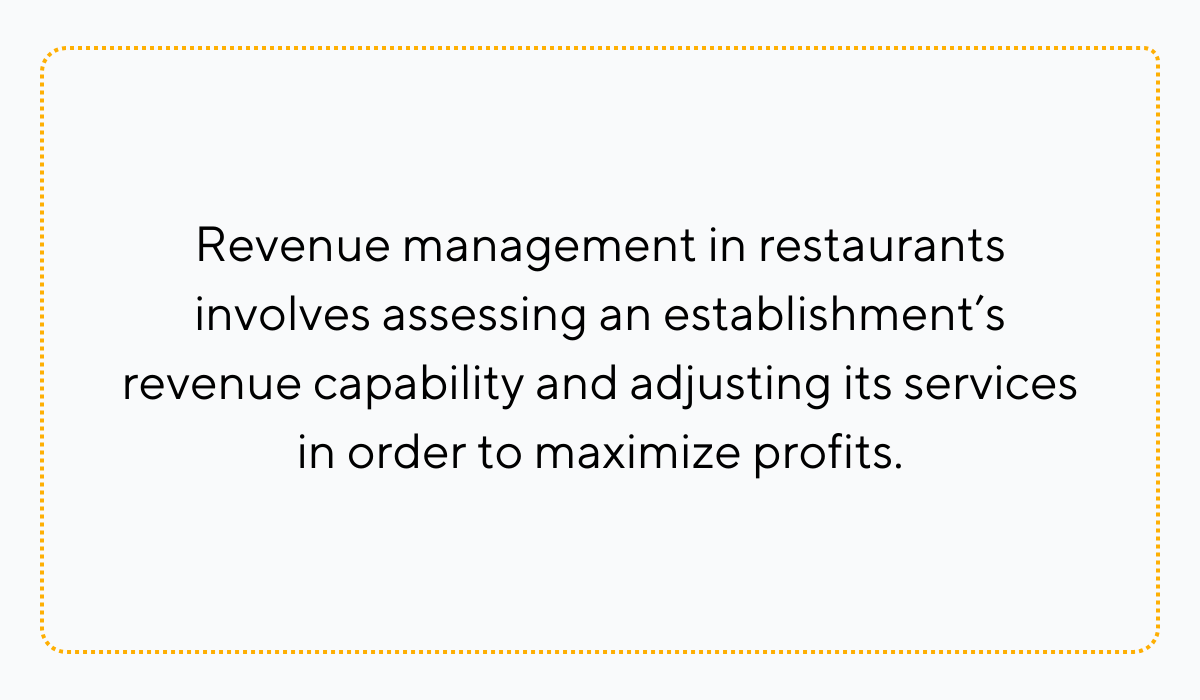
Illustration: Tablein / Data: Redmako
In other words, restaurant revenue management is all about recognizing the financial potential of your restaurant and then employing a combination of strategies in order to maximize it.
Revenue management is a concept that originally emerged in the 1970s in the airline industry as a response to challenges concerning revenue optimization in a very competitive market.
It has, however, since made its way into other sectors, including the restaurant industry, and has become one of the cornerstones of successful restaurant management.
On the surface, the concept might seem straightforward enough—all you need to do is increase your prices and you’ll increase your revenue, right?
Well, not really.
In reality, successful restaurant revenue management isn’t only about maximizing your revenue by any means necessary.
It’s about striking the balance between implementing the right revenue-increasing strategies and keeping your patrons happy.
Why Is Restaurant Revenue Management Important
Achieving this balance is no easy feat, so you might feel reluctant to even start exploring the various revenue management strategies, let alone experimenting with them.
However, looking for ways to optimize your revenue management is critical for the success of your restaurant.
Let’s take a look at why.
Helps Maximize Profits
Firstly, smart revenue management has the power to make your restaurant operations more profitable.
Yes, in times when costs are continuously on the rise, achieving this can seem like an impossible task.
However, by implementing revenue management strategies that make sense for your restaurant, you have the power to make it happen.
But what revenue management strategies are there, and how do you determine which ones will help you reach your revenue goals?
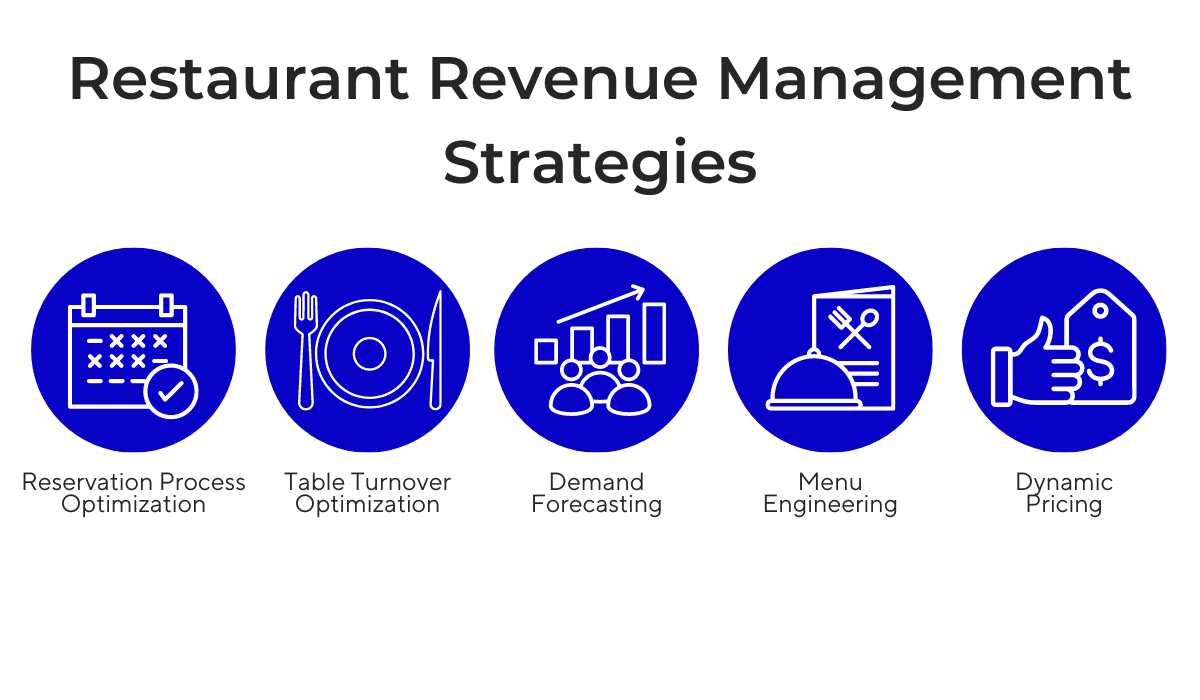
Source: Tablein
The image above depicts some of the revenue management strategies most commonly used in the restaurant industry.
While they all aim to help you keep your tables full and your profits high, some of them are more difficult to implement than others.
That is why we advise you to start at the beginning: with your reservation process optimization.
If your restaurant is currently taking reservations over the phone and/or email, it might be time to reconsider your approach and invest in restaurant reservation software such as our very own Tablein.
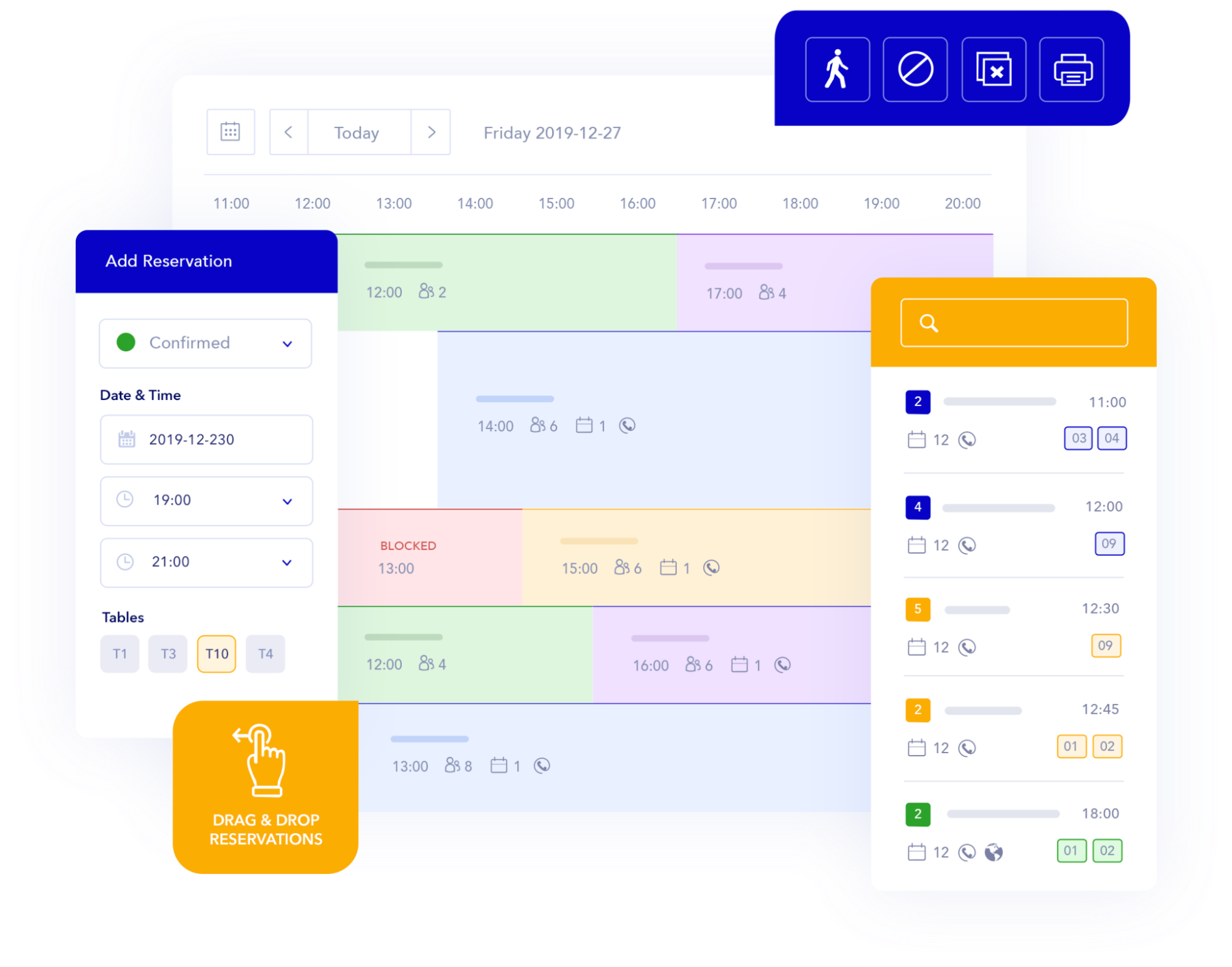
Source: Tablein
So, how exactly does restaurant reservation software contribute to maximizing your revenue?
For starters, it streamlines the entire process of taking and managing reservations and provides you with a clean, holistic view of your bookings, as you can see above.
Knowing exactly how many parties you can expect and what times are going to be the busiest makes it easier for you to optimize your staffing and predict the needed inventory levels.
This, in and of itself, can help you prevent food waste and minimize operational costs.
Furthermore, according to one of our users, Tablein can help you book more tables, which translates to higher profits for your establishment.

Source: Capterra
With the help of our software, you and your staff can control reservation times for individual tables and receive more last-minute table bookings, allowing you to ensure that each table is occupied at all times.
Lastly, streamlining your reservations using Tablein dedicated software is risk-free, since we offer a free trial period of 14 days.
That way, you can test the software for yourself without commitment, but also start your revenue management journey without incurring additional costs.
Increases Operational Efficiency
Following good revenue management practices also has a positive impact on your restaurant’s operational efficiency.
If you’ve ever unexpectedly gotten more guests than your scheduled staff could handle, you know what a toll this kind of situation can take—not only on your staff, but also on your guests, who probably ended up having a less-than-stellar experience.
Sherri Kimes, a revenue management expert, explains:
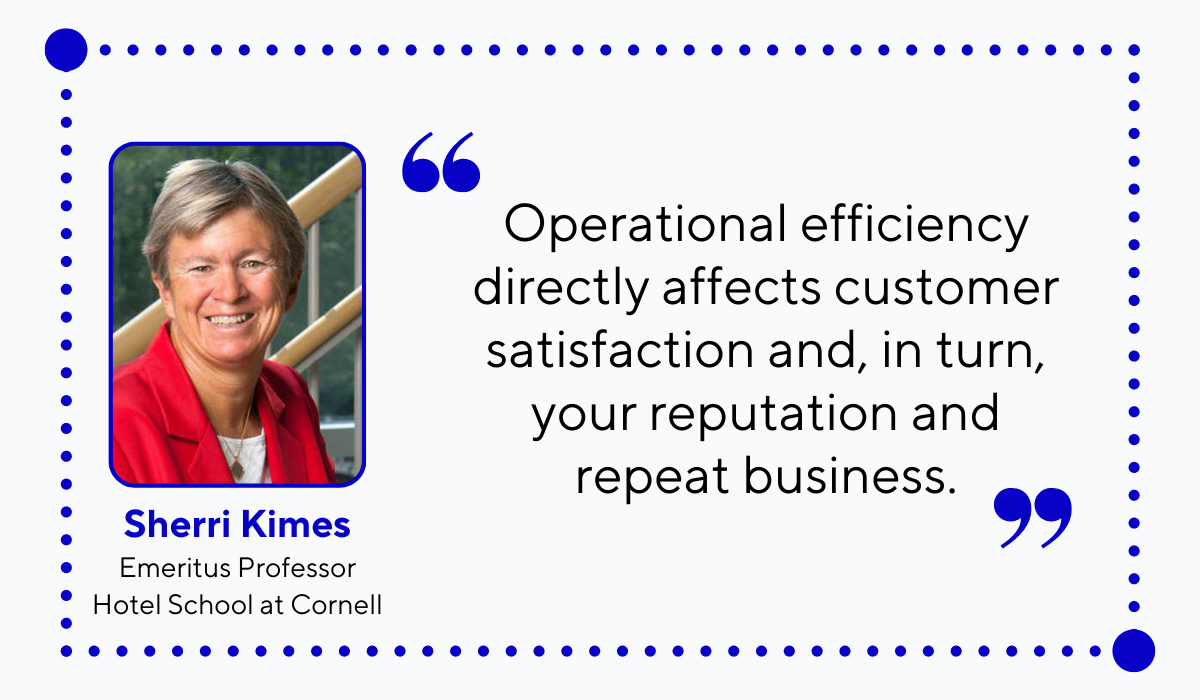
Illustration: Tablein / Data: QSR Magazine
Therefore, we can conclude that achieving a high level of operational efficiency is crucial to the success of your business.
But what revenue management technique can you turn to in order to achieve this?
The answer is demand forecasting.
This strategy entails analyzing both historical data and current market trends in order to accurately determine when you can expect an increase—or a decrease—in demand at your restaurant.
To obtain this data, you can consider investing in specialized demand forecasting software, or make use of your existing systems, such as your POS or reservation system.
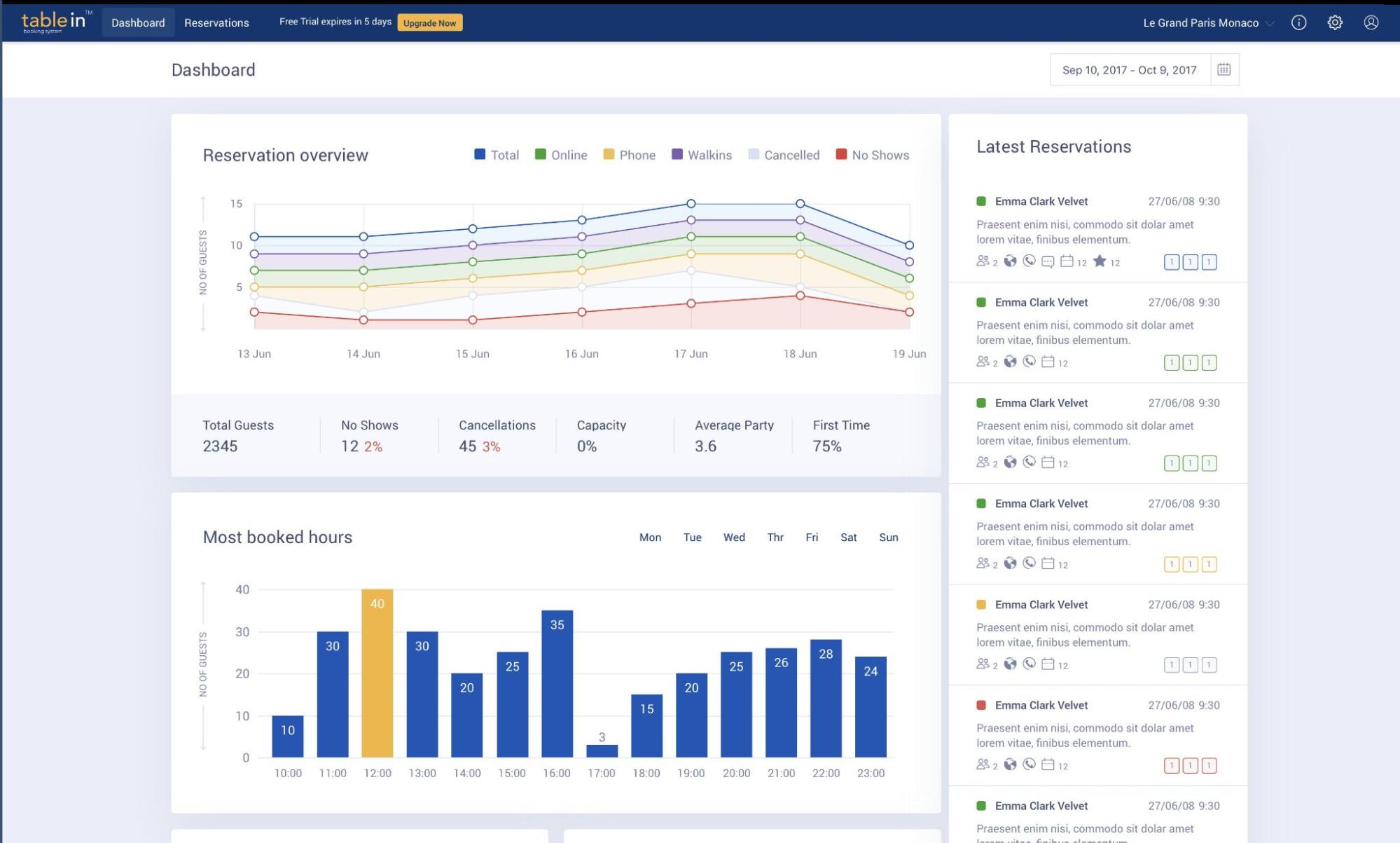
Source: Tablein
They will provide you with a plethora of data you can use to anticipate future demand as accurately as possible, and then align your staffing and inventory levels accordingly.
This approach will ensure that your operations are running smoothly and that you’re able to provide your guests with the best possible experience at your restaurant.
Creates Competitive Advantage
As we mentioned before, the restaurant industry is a competitive one.
So, if you want your establishment to be the number one choice for both your existing guests and new ones, you need to find a way to outperform your competitors.
This is something that good revenue management can help you with.
But to be able to create a competitive advantage in the first place, you need to start by conducting a competitive analysis.
Here are some competitive analysis questions you can ask yourself to get an idea of what you’ll be focusing on:
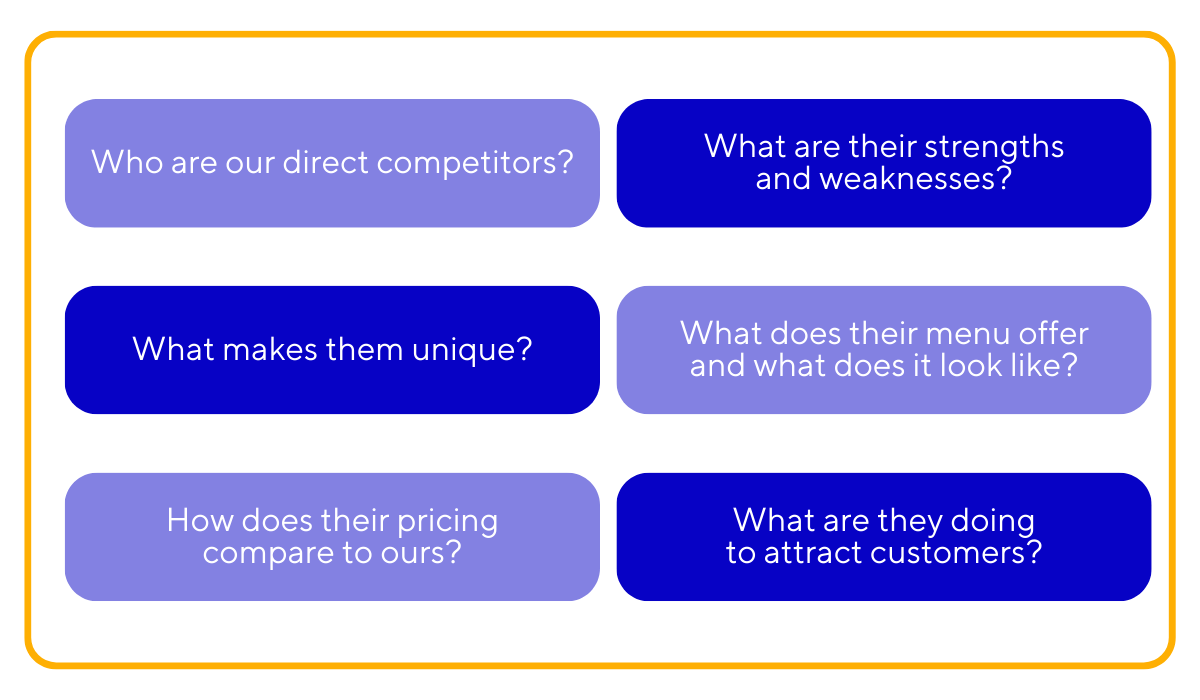
Illustration: Tablein / Data: TouchBistro
Once you have an understanding of how you compare to your competitors, you can start thinking about what kind of revenue management strategy will earn you the desired competitive advantage.
One of the most commonly used ones is the dynamic pricing strategy, which relies upon adjusting your menu prices based on demand.
Let’s say you’ve noticed that Thursday evenings are extremely slow at your restaurant, while that’s not the case for your competitors.
In order to change this, you can implement the principles of dynamic pricing by offering a special discount to guests who book a table during those off-peak hours.
However, for this approach to work, you need to refer back to the competitive analysis you conducted earlier, as it will help you determine what your offer should look like.
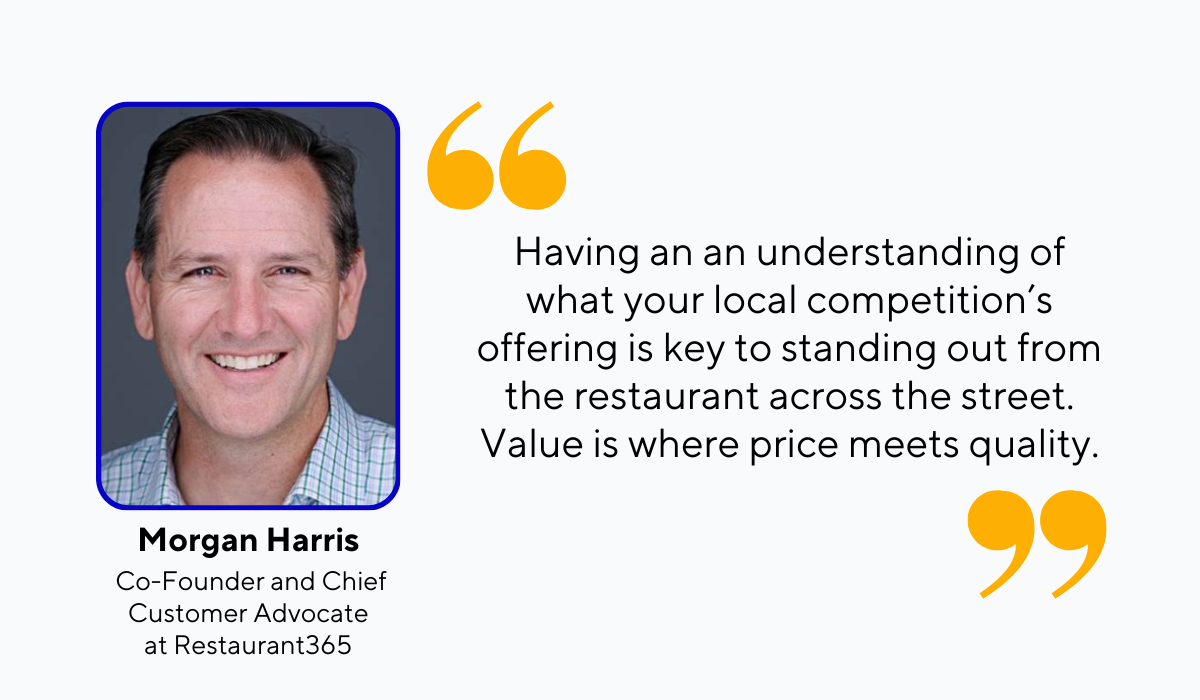
Illustration: Tablein / Quote: LinkedIn
In other words, your Thursday evening offer should be good enough to incentivize people to choose your restaurant over that of your competitors, and consistent enough to make you known for it.
With this revenue management strategy, you won’t only gain a competitive advantage, but also fill those empty tables and significantly increase your revenue.
The Main Factors of Restaurant Revenue Management
Now that we’ve covered some of the reasons why it’s fundamental for restaurants to implement efficient revenue management practices, it is time to delve further into the topic.
In these upcoming sections, we are going to discuss the three pillars of revenue management in the restaurant industry—time, menu, and price management—and explain how you can excel at them.
Time Management
In the context of restaurant revenue management, time management refers to the ability to maximize a restaurant’s revenue by managing the amount of time guests spend occupying a table.
Simply put: by preventing your guests from lingering at their table for too long—especially during peak hours—you have the opportunity to maximize your table turnover and, consequently, your revenue.
But how do you do that without making your guests feel unwelcome?
As it turns out, according to users of the Food Talk Central forum, time limits generally don’t seem to be an issue, provided that you communicate them ahead of time—perhaps, during the table reservation process.

Source: Food Talk Central
Being transparent about your table time limits, though, is the easy part.
The hard part is ensuring that your guests aren’t racing against time trying to finish their meal within their allotted slot.
To achieve that, you need to assemble a well-trained team of staff members that is able to seat and serve your guests quickly, leaving them enough time to actually enjoy their meal.
This is going to require a good amount of coordination between your front-of-house and your back-of-house staff, so you need to go above just providing basic training on teamwork.
For the best results, consider investing in technology that is going to streamline communication and collaboration between them, such as a mobile POS system.
That way, the servers can input your guests’ orders directly into the system and immediately transmit the information to the kitchen, where your back-of-house staff can start preparing the order promptly.
Frankie DiCarlantonio, Director of the Scaffidi Restaurant Group, explains that introducing a mobile POS system has had an extremely positive impact on efficiency at his restaurants:
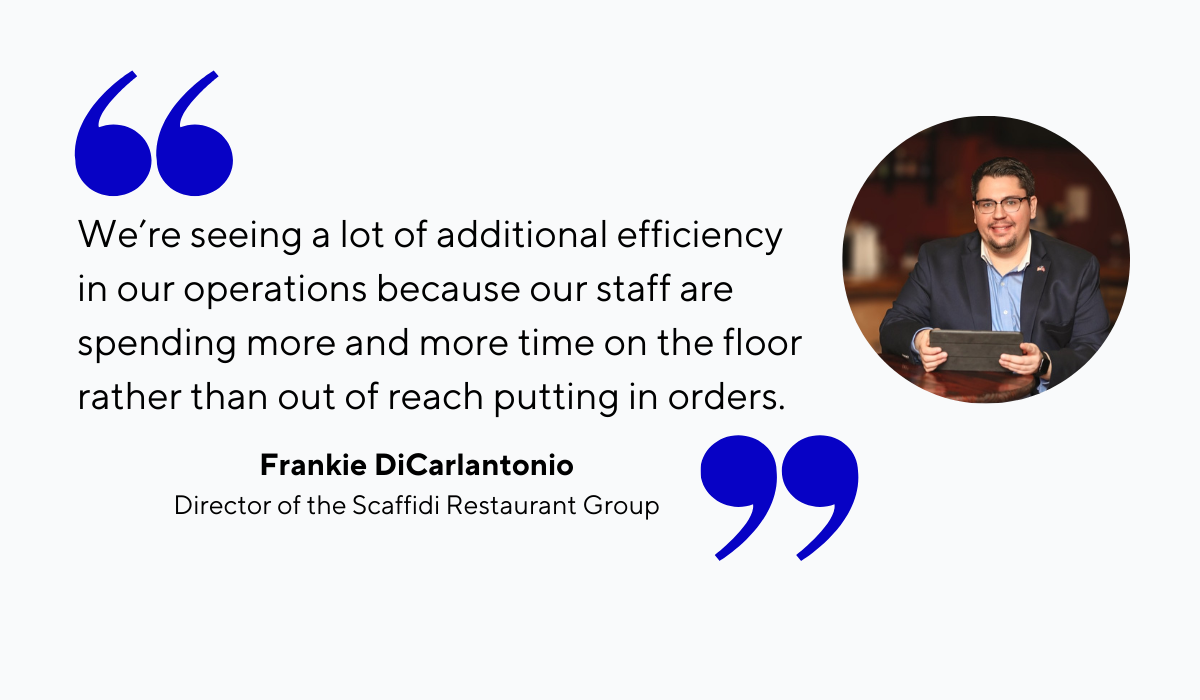
Illustration: Tablein / Quote: Square
Increasing your staff’s efficiency allows for better table turnover, and, in turn, improved time management at your restaurant.
So, consider introducing table time limits, don’t forget to communicate them during the reservation process, and, most importantly, invest in staff training and technology to be able to meet them.
Menu Management
The next important revenue management factor on our list is menu management.
We’re certain that, as a restauranteur, you’ve heard of menu engineering—the process of analyzing and optimizing your menu pricing and item positioning guided by your sales data and food costs.
For solid advice on how to nail the art of menu engineering, let’s take a look at what Gregg Rapp, known as “the restaurant industry's Original Menu Engineer”, has to say:
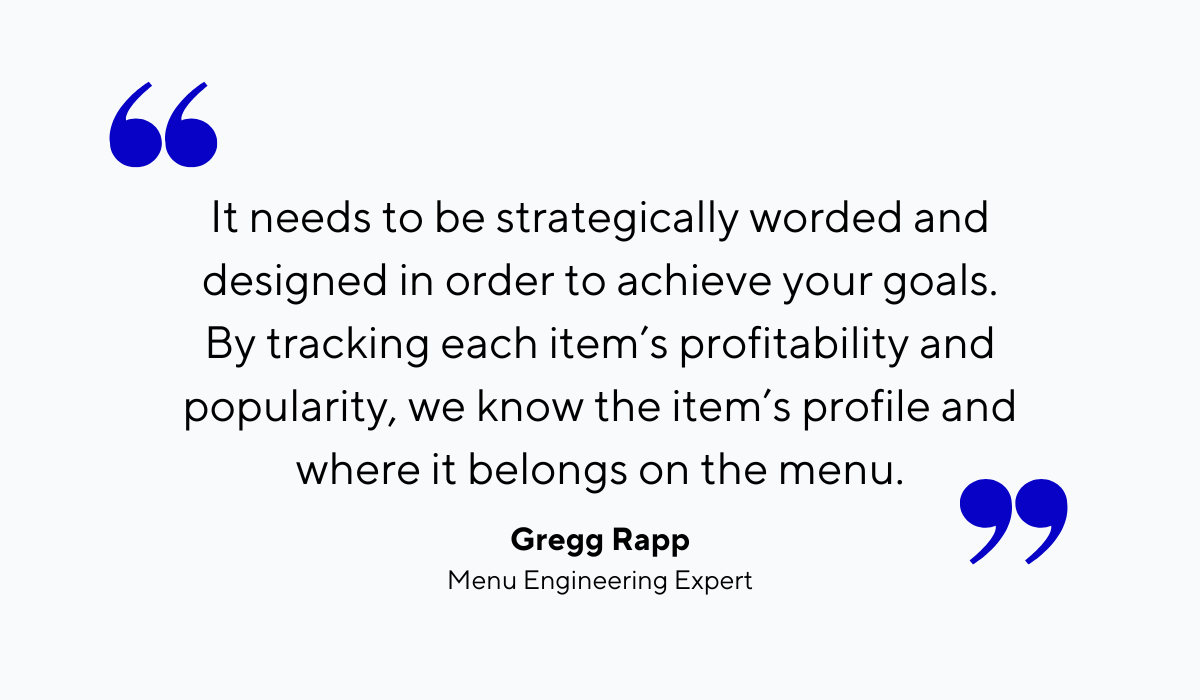
Illustration: Tablein / Quote: PMQ
Apart from asking yourself where you need to position specific menu items in order to maximize your revenue, also consider the following question:
Do you think you would benefit from scaling your menu back?
According to James Keppy, corporate chef for the food production company Maple Leaf Foods, the answer is likely—yes.
He explains that having fewer items on the menu is going to save your restaurant money and reduce food waste at the same time:

Illustration: Tablein / Quote: Brand Points Plus Canada
On top of that, eliminating dishes that aren’t popular or profitable benefits your staff as well.
Your front-of-house employees will have a more comprehensive knowledge of the menu, thus making it easier for them to cross-sell and upsell, or simply offer more personalized recommendations to your guests.
For your kitchen staff, having to master fewer meals will lead to them becoming experts in preparing those dishes, thereby ensuring the highest level of quality possible.
As you can see, proper menu management can yield significant advantages.
So take some time to figure out which menu items bring your restaurant the most success, position them strategically, and watch your guest experience and revenue reach a whole new level.
Price Management
The final facet of successful revenue management we’re going to present today is price management.
Determining what the right price is for each item on your menu is a time-consuming, but extremely important task, as it has a strong impact on both guest satisfaction and your revenue.
But before we delve into that, let’s take a look at some key factors you need to consider when setting your menu prices:

Illustration: Tablein / Data: Lightspeed
Once you’ve priced your dishes, it’s time to consider introducing demand-based variable pricing, also known as dynamic pricing—a revenue management strategy that can help make your restaurant business more profitable.
Dynamic pricing often involves increasing menu prices during peak periods and decreasing them when there’s little to no traffic.
And while we’re sure your patrons are happy to get a free side or a discount on drinks, research shows that fluctuations in pricing based on demand tend to be perceived more negatively.
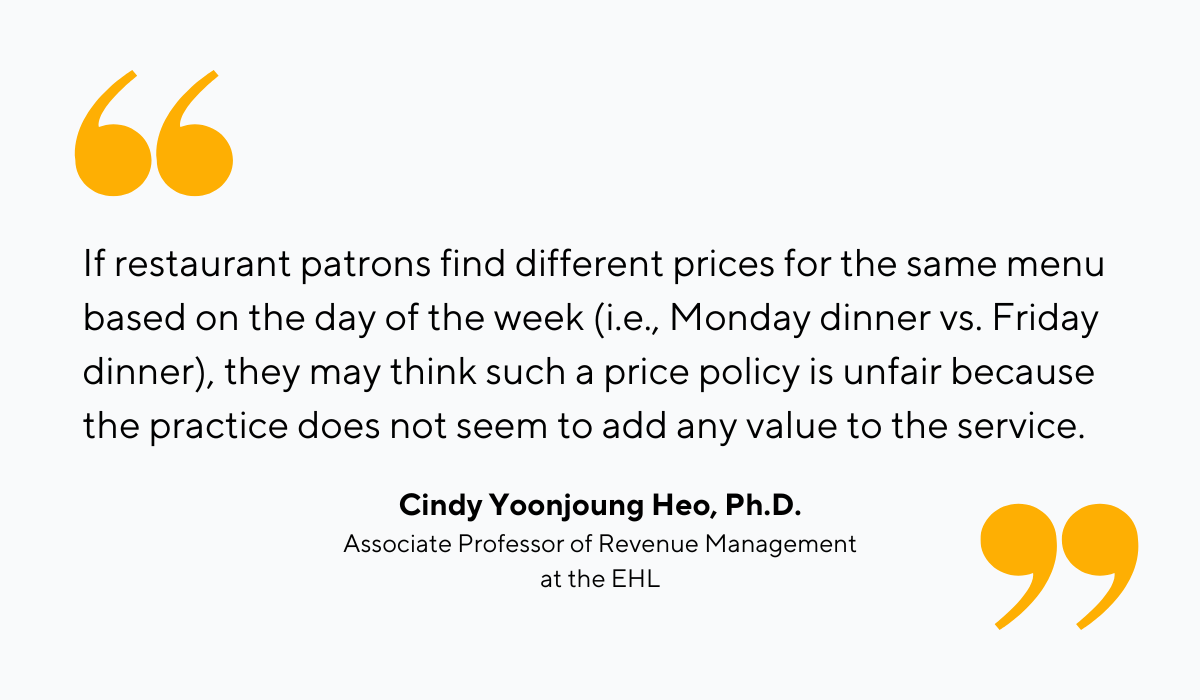
Illustration: Tablein / Data: ResearchGate
So, rather than pumping up your prices during peak hours, try flipping the script:
Take a look at what your least busy hours usually are and offer special deals to guests who book a table within that window.
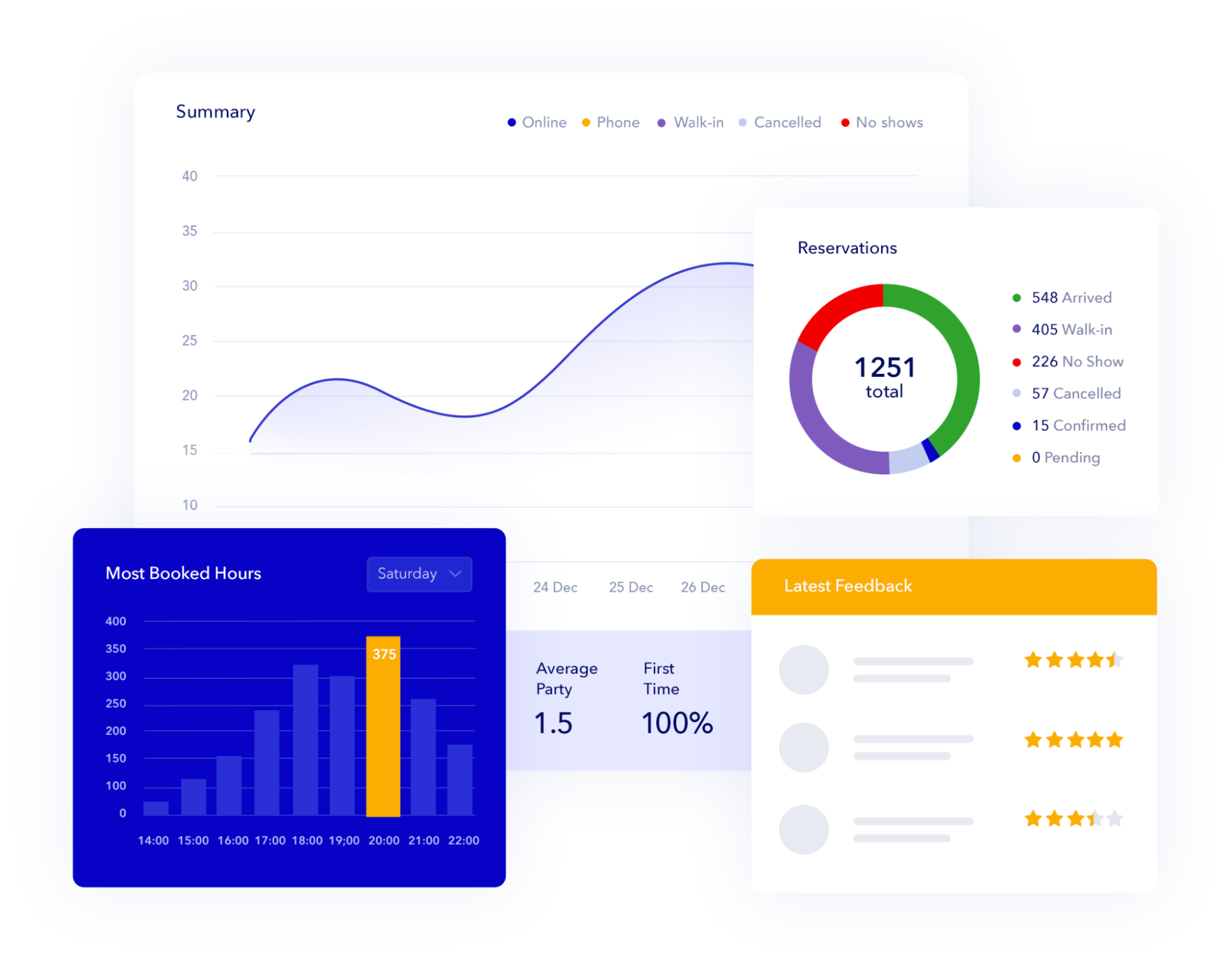
Source: Tablein
In the example above, the restaurant is generally much less busy on Saturday afternoons than evenings.
Hypothetically, this restaurant could organize a happy hour between 14:00 and 16:00, thus increasing their occupancy rate while offering a good deal to their guests.
According to Statista, a large number of people attend happy hours at bars and restaurants precisely because of good prices, so it’s definitely a tactic worth considering.
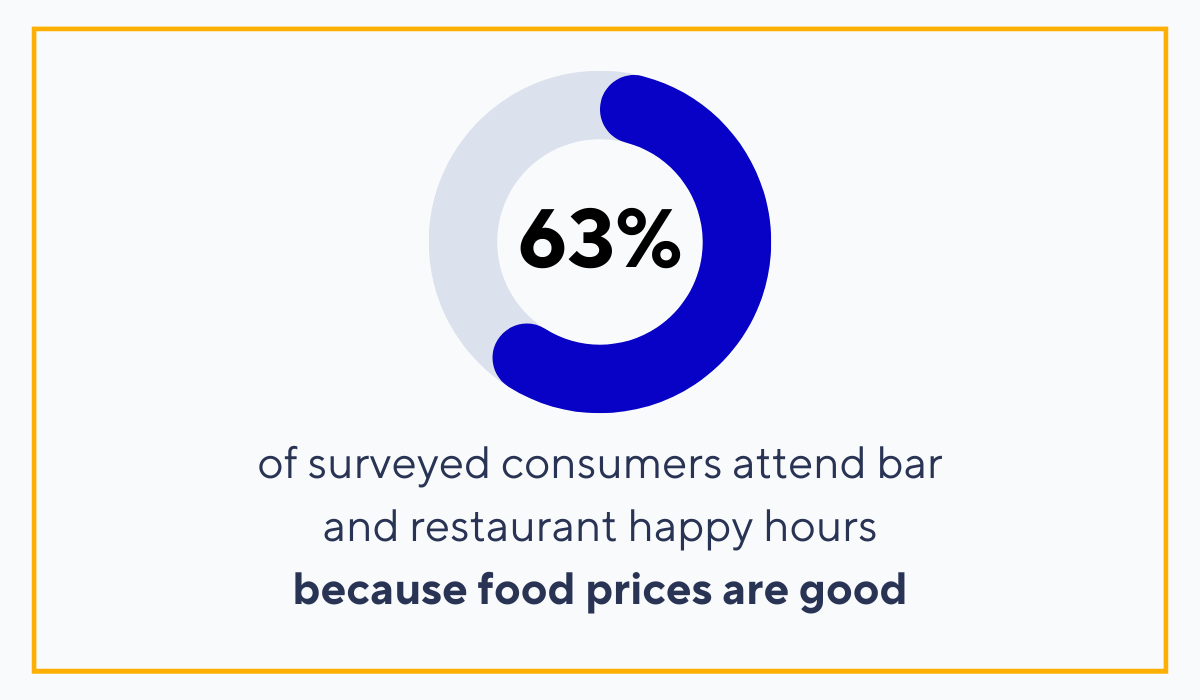
Illustration: Tablein / Data: Statista
All in all, the process of pricing your menu can be quite complex, and it might even take you several tries to get it right.
However, once you find the right balance between maximizing your profits and maintaining guest satisfaction, everybody wins.
Conclusion
As you can see, the topic of restaurant revenue management has many layers, and following the best revenue management practices can be quite demanding.
However, you now know what steps you need to take to maximize your profits, enhance the efficiency of your operations, and become the number one restaurant in your area using some common revenue management strategies.
We hope that this article has successfully illustrated why revenue management is so important, and empowered you to try your hand at elevating it at your own restaurant.
Get a 30-day Exclusive Trial
As a Tablein blog reader, you’re eligible for an exclusive 30-day free trial to experience our simple reservation solution for your restaurant.
Enter your business email, and we’ll send you all the steps needed to create your account.
Share this
You may also like

5 Effective Restaurant Revenue Management Strategies

6 Tips for Effective Restaurant Revenue Management
